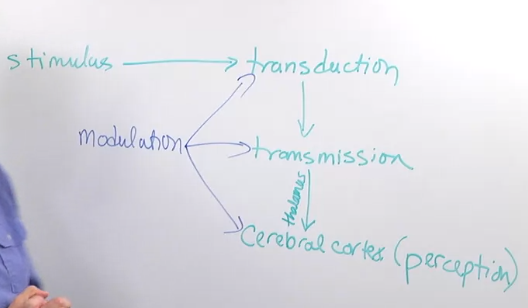- Stimulus and perception are disconnected processes.
- Stimulus refers to external changes (light, sound, touch, etc.).
- Perception is the output, dependent on the neocortex.
 II. Transduction
II. Transduction
- The stimulus energy must be converted into neural (electrical) energy.
- This transformation is a crucial step in the process.
III. Transmission
- The neural signal must travel through channels to reach the cerebral cortex.
- The thalamus is essential as the interpreter, translating information for the cerebral cortex.
IV. Modulation A. Modulation occurs at every level, even during transduction. B. Examples: 1. Sunburn - painful touch/heat perception despite the same stimulus. 2. Varied reactions to vaccination shots - the meaning modulates perception. 3. Hunger/thirst - context modulates taste perception.
V. Perception Problems A. Transduction: Common issues with sight and hearing stem from problems in the eye (retina) and ear (cochlea). B. Transmission: Strokes can cause problems, particularly in vision.
VI. Conclusion A. Transduction is the primary focus when discussing vision and hearing impairments. B. The path from stimulus to perception involves transduction, transmission through the thalamus, and modulation at various levels.